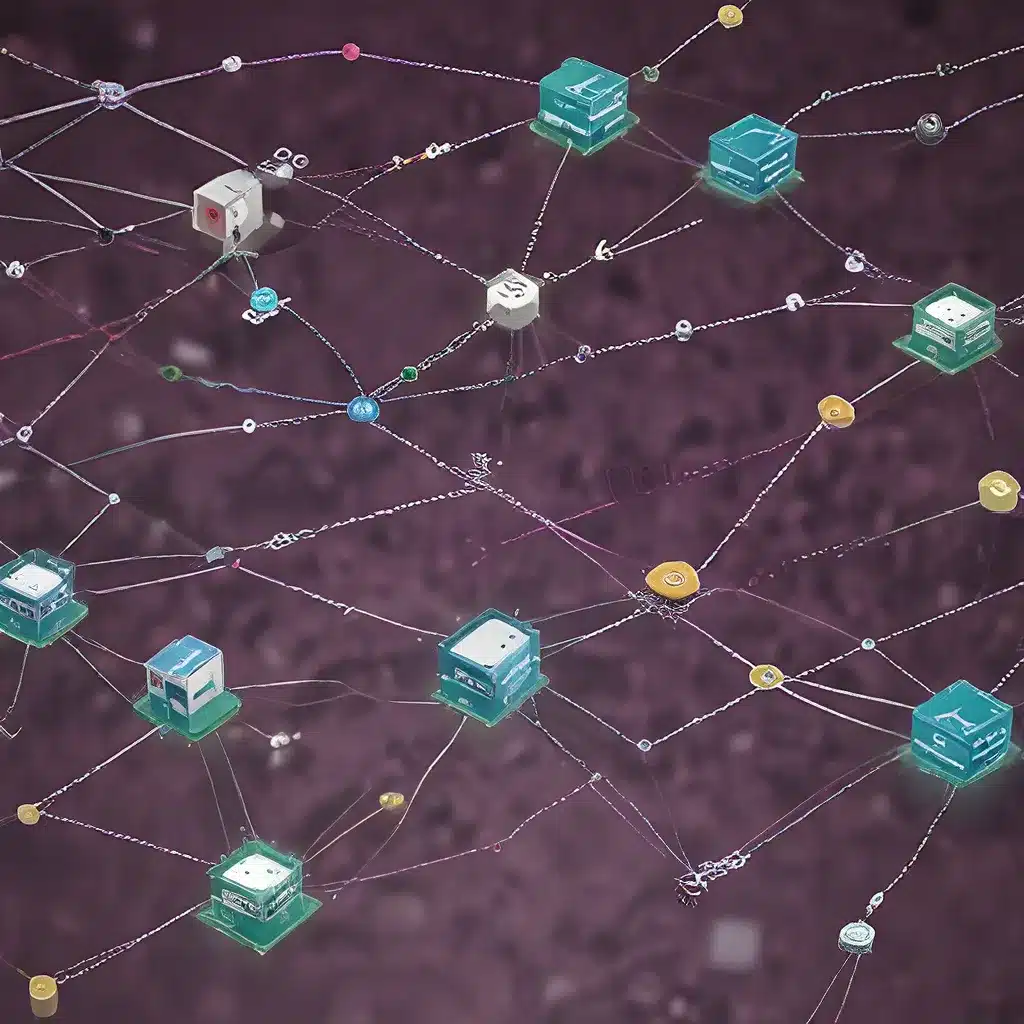
In the rapidly evolving landscape of the Internet of Things (IoT), sensor networks have emerged as a crucial enabler, empowering a wide range of applications from smart cities and industrial automation to environmental monitoring and healthcare. As these networks grow in complexity, ensuring fault tolerance and responsiveness has become a paramount concern, as the reliability and real-time performance of sensor data can make or break the success of IoT deployments.
Navigating the Challenges of Sensor Network Design
Designing robust and efficient sensor networks is no easy feat. These distributed systems must contend with a multitude of challenges, including limited power resources, intermittent connectivity, and the inherent unreliability of wireless communication. Researchers have long recognized the need for innovative approaches to address these issues, leading to the development of advanced distributed algorithms that can optimize sensor network performance and resilience.
One of the key areas of focus in sensor network design is fault tolerance, which refers to the ability of the network to continue operating even in the face of hardware failures, software glitches, or environmental disruptions. Distributed algorithms play a vital role in enhancing fault tolerance by enabling dynamic reconfiguration, load balancing, and redundancy management within the network. These techniques ensure that critical sensor data can still be collected and transmitted, even when individual nodes or communication links fail.
Enhancing Responsiveness through Distributed Algorithms
Equally important is the responsiveness of sensor networks, which directly impacts the timeliness and relevance of the data they generate. In time-sensitive IoT applications, such as emergency response or industrial process control, low latency and real-time data delivery are essential. Distributed algorithms can address these requirements by optimizing task scheduling, data aggregation, and network coordination, ensuring that sensor data is processed and acted upon in a timely manner.
One approach to improving responsiveness is the use of edge computing, where data processing and decision-making are performed closer to the sensor nodes, rather than relying solely on a centralized cloud infrastructure. Distributed algorithms can orchestrate this edge-based processing, minimizing the latency and bandwidth requirements of the overall system.
Securing Sensor Networks: A Distributed Approach
Security is another critical concern in sensor networks, as these systems often operate in uncontrolled environments and are susceptible to a wide range of cyber threats, from node compromise to data tampering. Distributed algorithms can play a pivotal role in enhancing the security posture of sensor networks, through techniques such as secure routing, lightweight encryption, and decentralized authentication.
By leveraging distributed machine learning algorithms, sensor nodes can learn to detect and mitigate security threats in a collaborative manner, without relying on a centralized authority. This approach not only improves the overall security of the network but also enhances its resilience to targeted attacks.
Energy-Efficient Sensor Networks: Optimizing for Longevity
One of the most significant challenges in sensor network design is energy management. Sensor nodes are often resource-constrained, with limited battery life or energy harvesting capabilities. Distributed algorithms can play a crucial role in optimizing the energy consumption of sensor networks, through techniques such as duty cycling, data compression, and energy-aware routing.
By intelligently managing the power states of individual nodes and coordinating the workload distribution across the network, distributed algorithms can significantly extend the operational lifespan of sensor deployments. This is particularly important in scenarios where sensor nodes are deployed in remote or inaccessible locations, where frequent battery replacements or recharging can be impractical or cost-prohibitive.
The Future of Sensor Networks: Embracing Distributed Intelligence
As the IoT ecosystem continues to evolve, the role of distributed algorithms in sensor network design will only become more prominent. These intelligent, decentralized approaches hold the key to unlocking the full potential of sensor networks, enabling them to operate with greater fault tolerance, responsiveness, security, and energy efficiency.
By harnessing the power of distributed computing, sensor networks can become more adaptive, self-healing, and autonomous, paving the way for truly resilient and intelligent IoT infrastructures. As the sensor network landscape continues to expand, organizations and researchers across various industries would do well to explore the possibilities offered by these cutting-edge distributed algorithms, ensuring that their IoT deployments can withstand the challenges of the modern digital landscape.
To learn more about the latest advancements in sensor network design and IoT technologies, be sure to visit Sensor-Networks.org, your go-to resource for all things related to the distributed, intelligent future of sensor networks.